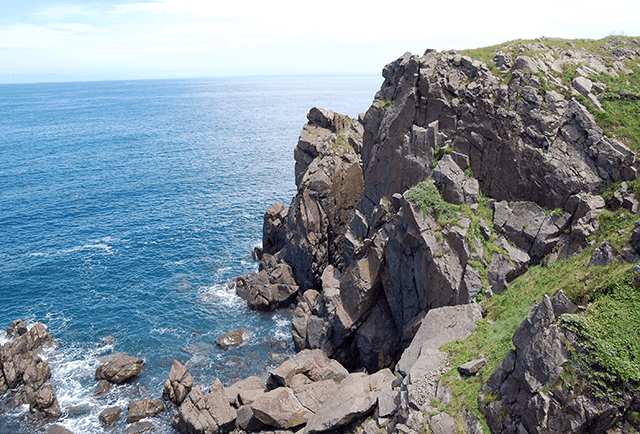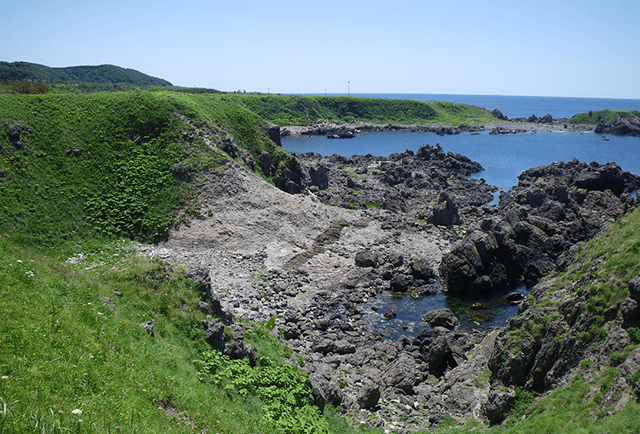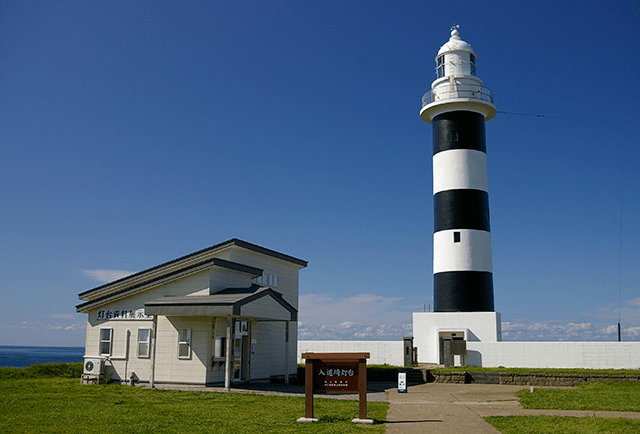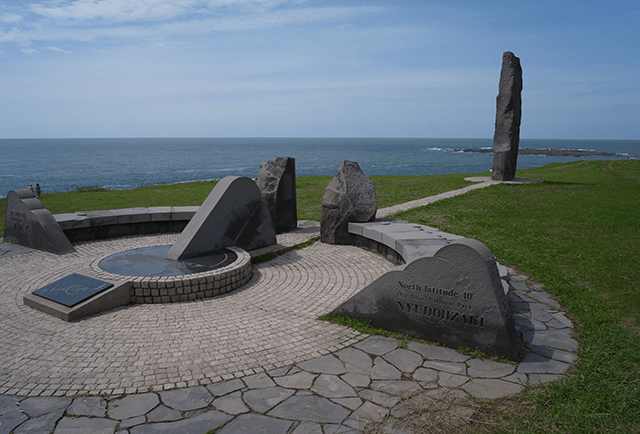-
title Shishi Otoshi Cliffs one word explanation gift from earth, the birth of “stone-roasted dishes” keywords geologyhistoryfood confirm, register Oga Quasi-National Park, One hundred strange sotones from Japan conservation laws and ordinances Natural Parks Act 
There used to be many deer on Oga Peninsula, but when the deer began to overrun the area, they were herded off this cliff, giving it its name (“shishi otoshi” means “falling deer”). The volcanic rock seen on this cliff is called welded tuff and was formed about 70 million years ago when volcanic ash and lapilli hardened while still hot. Delicate and hard, when the rock crumbles into the sea and gets polished smooth by the waves, it is used in Oga’s famous “stone cooking”. These stones are as indispensable to Oga Peninsula’s modern cooking as they were in the past.
-
title Oni no Tawarakorogashi Rocks one word explanation magma trail, dike keywords geologylegendhistory confirm, register Oga Quasi-National Park, One hundred strange sotones from Japan conservation laws and ordinances Natural Parks Act 
The name Oni no Tawarakorogashi Rocks (Ogre’s Rolling Bale Rocks) comes from the way the alternating stripes of pink rock (granite) and brown rock (basalt) look like marks made from an ogre rolling a bale of rice. The pink rock is granite, the oldest rock on Oga Peninsula (about 90 million years old), the blackish rock on top of it is a conglomerate of volcanic rock (about 70 million years old), and the brown rock that runs through the granite is basalt (about 20 million years old), so you can observe rocks from three different time periods at once. The basalt stripes in the granite of Oni no Tawarakorogashi Rocks were formed by magma that welled up through cracks in the rock and then hardened, forming what is called a dike.
-
title Cape Nyudozaki Lighthouse Exhibition Room one word explanation Chosen as one of 50 lighthouses of Japan! keywords experiencebeautifulsearch confirm, register Oga Quasi-National Park, 50 lighthouses of Japan conservation laws and ordinances Natural Parks Act 
The Cape Nyudozaki lighthouse is famous, having been designated as one of the 50 Great Lighthouses of Japan. First lit in 1898, the 28m tall lighthouse emits a white light every 15 seconds which can be seen from 37km away. As you climb Cape Nyudozaki to reach the lighthouse, you get a beautiful view of the beach and Mizushima Rocks off the coast. The lighthouse also contains an exhibition room where you can learn about the lighthouse’s history.
Hours Late April through Early November, 9:00am-4:00pm Fee 200 yen general admission/free for children aged 12 and under (lighthouse exhibition room) Inquiries Akita Coast Guard Office
TEL.018-845-1624 -
title Lat. 40゜ Monument one word explanation a direct path to go across Japan keywords experiencehistorysearch confirm, register Oga Quasi-National Park conservation laws and ordinances Natural Parks Act 
Located at 40゜ north latitude, Cape Nyudozaki at the northernmost point of Oga Peninsula offers a stunning view of the Sea of Japan. The Lat. 40゜Monument, commemorating Cape Nyudozaki’s location, was built in 1990 using andesite rock from Mt. Kanpuzan. In the center of the round sun platform are the Sundial Stone and Map Stone, and pointing the way due north is the Northern Stone. Beijing and New York are among the other cities located at the same latitude.
Cape Nyudozaki
Home >
What is the Oga Peninsula - Ogata Geopark? >
Geosites and spots >
north coast area >
Cape Nyudozaki

